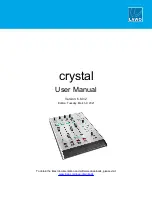
Combustion Testing and Adjustment
Danger
A combustion test checks that the gas valve is operating properly in the field. To perform a combustion test, you
must be a qualified, trained and licensed gas fitter.
Making adjustments to the gas valve without a properly calibrated gas combustion analyzer and by people who
are not trained and experienced in its use is forbidden. Failure to use an analyzer can result in an immediate
hazard.
Model Number
High Fire Input
SFC 16-125
125 MBH
Table 4
Rated input of a converted unit
Normal ignition system sequence of operation:
The unit's control, upon a call for heat or DHW, turns on the combustion fan for a 5-second pre-purge, then energizes the
spark electrode and gas valve for a 5-second trial for ignition.
If the burner does not light, the process is repeated until the burner lights and flame is detected. After 4 unsuccessful trials
for ignition, the unit locks out and will need to be manually reset by pressing the Return Arrow
button.
To perform a combustion test and adjustment:
1. Turn off the unit’s manual gas valve.
2. With a Torx 15 screwdriver, open the inlet gas supply pressure test port by turning its
screw 1 full turn counterclockwise.
3. Attach a manometer to the inlet pressure test port and turn on gas to appliance.
Static manometer reading should be ideally 11" w.c. for Propane.
Minimum and maximum static pressure must be between 5" and 14" w.c.
Monitor pressure throughout the commissioning (start-up) procedure.
Pressure may droop up to 1" w.c. at high fire.
4. To set the unit to high fire manually, create a large DHW demand for the unit to heat.:
Allow the unit to ignite / run against a large load, to maintain high fire. To set the high-fire manually, press and hold
the Service icon for two seconds. Then while holding the Service icon press the Plus button twice. “H” will show in
the service display as the unit enters high fire.
4
|

























